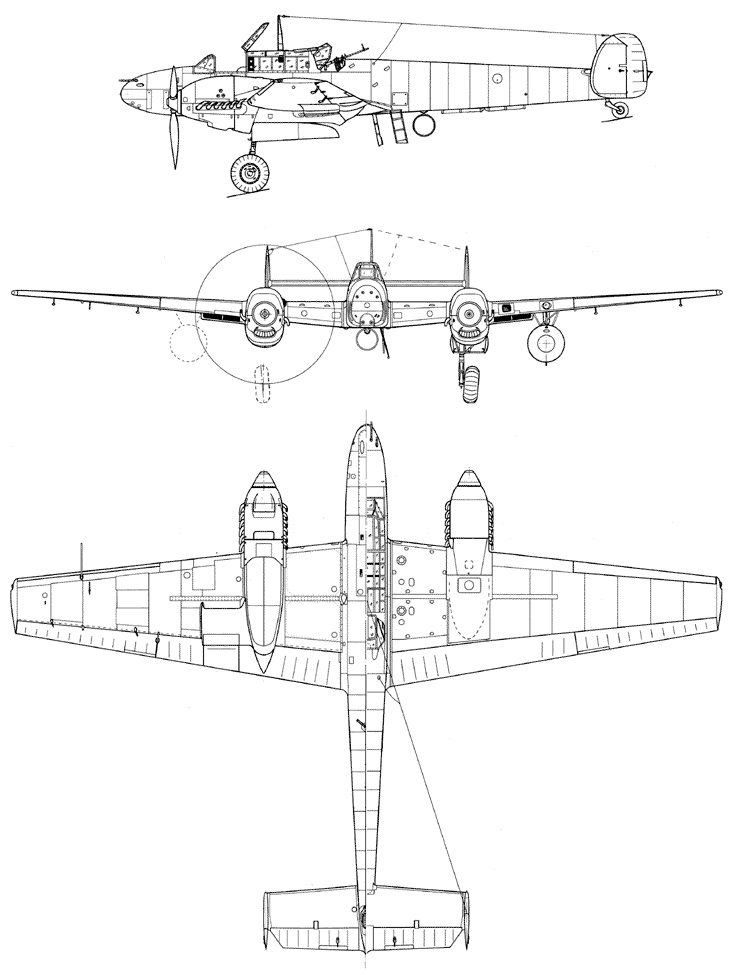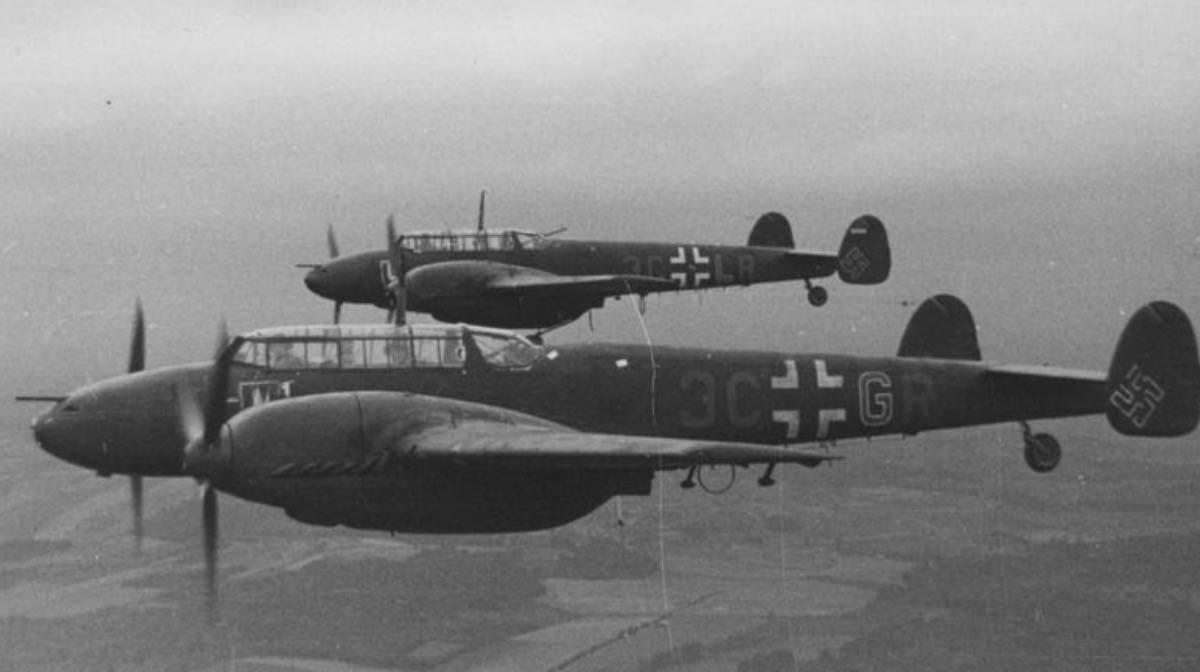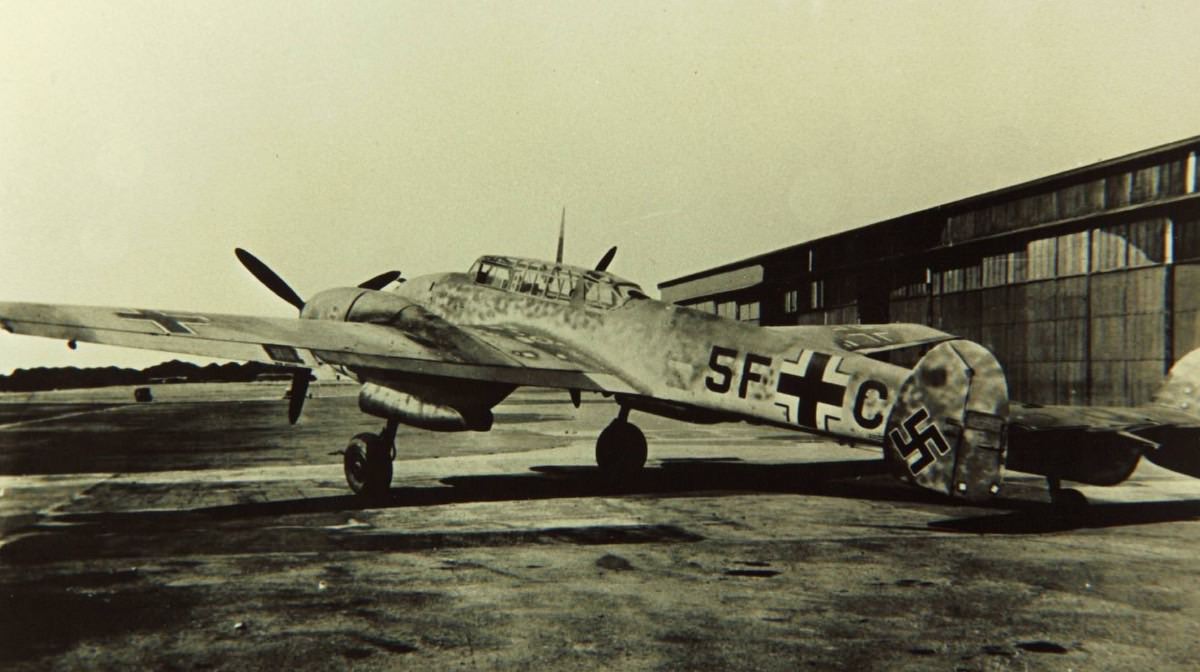Price: $29.95
- 4 magazines, 10 manuals, & photos
- PDF contains 977 pages
- Content is keyword searchable
- Print a personal copy
- Pay via PayPal or Credit Card
- International orders welcome!
- Download files upon payment
June 1972
- The Racer’s Edge, Highlights from the 1932 Cleveland Air Races
- Destroyer, Messerschmitt 110, Warhorse of Germany’s Night Fighters
- Thunder From The Sky, North American’s B-25 Mitchell medium bomber
April 1974
- SAAB Story, Swedish Aerial Weapons
- Whine From The Jug, the immortal P-47 Thunderbolt
- Ace’s Corner
- Parasols of Santa Monica
February 1975
- Bush Pilot, Flying Alaska in a Lockheed Vega
- Night Stalker, Revelle’s Me-110G model
- The Sparrowhawk Airship Fighter
- Blackhawk, the Curtiss XP-87
- The Borrowed Bomber, Lockheed Ventura
February 1985
- Messerschmitt Me-110 Nightfighter
- B-24 Liberator Gallery
- Catapult-Launched Curtis Seagulls, Seamews, and Seahawks
Manuals & Photos
- Instructions for Flying the Messerschmitt 110
- Vultee Aircraft Inc. Analysis of the Me-110 Airplane
- 8 German Me-110 Manuals
- Over 60 Messerschmitt Me-110 photos
Messerschmitt Me-110 / Bf-110
Me-110 C-1 Specifications
Variants
On Display
Cutaway
Videos
General Characteristics

- Crew: 2 or 3
- Length: 12.0714 m (39 ft 7.25 in)
- Wingspan: 16.2497 m (53 ft 3.75 in)
- Height: 4.128 m (13 ft 6.5 in)
- Wing area: 38.4000 m2 (413.334 sq ft)
- Airfoil: root: NACA 2R1 (18.5%); tip: NACA 2R1 (11%)
- Empty weight: 4,425 kg (9,755 lb)
- Empty equipped weight: 4,885 kg (10,769 lb)
- Gross weight: 6,028 kg (13,289 lb)
- Max takeoff weight: 6,749 kg (14,880 lb)
- Fuel capacity: 1,272 l (336 US gal; 280 imp gal) in 4 centre-section tanks
- Powerplant: 2 × Daimler-Benz DB 601A-1 V-12 inverted liquid-cooled piston engines,
- 780 kW (1,050 hp) each for take-off
- 820 kW (1,100 hp) at 3,700 m (12,140 ft)
- Propellers: 3-bladed VDM variable-pitch propellers
Performance
- Maximum speed:
- 475 km/h (295 mph, 256 kn) at13,289 lb (6,028 kg) at sea level
- 525 km/h (326 mph; 283 kn) at 4,000 m (13,120 ft)
- 541 km/h (336 mph; 292 kn) at 6,000 m (19,685 ft)
- Cruise speed:
- 262 km/h (163 mph, 141 kn) maximum continuous at sea level
- 489 km/h (304 mph; 264 kn) maximum continuous at 5,000 m (16,400 ft)
- 484 km/h (301 mph; 261 kn) maximum continuous at 7,000 m (22,970 ft)
- 349 km/h (217 mph; 188 kn) economical cruise speed at 4,200 m (13,780 ft)
- Landing speed: 150 km/h (93 mph; 81 kn)
- Range:
- 774 km (481 mi, 418 nmi) at sea level with normal internal fuel at maximum continuous cruise speed
- 850 km (530 mi; 460 nmi) at 5,000 m (16,400 ft) at maximum continuous cruise speed
- Range at economical cruise speed:
- 909 km (565 mi; 491 nmi) at 7,000 m (22,970 ft) at economical cruise speed
- 1,094 km (680 mi; 591 nmi) at 4,200 m (13,780 ft) at economical cruise speed
- Service ceiling: 10,000 m (32,810 ft)
- Rate of climb: 11 m/s (2,200 ft/min)
- Time to altitude: 6,000 m (19,685 ft) in 10 minutes 12 seconds
- Wing loading: 173 kg/m2 (35 lb/sq ft)
- Power/mass: 0.241 kW/kg (0.147 hp/lb)
Armament
- Guns:
- ** 2 × 20 mm (0.787 in) MG FF/M cannon (180 rpg—3 drums with 60 rpg, cannon were reloaded by rear gunner or radio operator during flight)
- 4 × 7.92 mm (0.312 in) MG 17 machine guns (1,000 rpg)
- 1 × 7.92 mm (0.312 in) MG 15 machine gun for defence
- Bf 110 V1 – First flown 12 May 1936 using two Daimler-Benz DB 600 engines
- Bf 110 V2 – Completed on 24 October 1936 using two Daimler-Benz DB 600 engines. It was assigned directly to the Luftwaffe test centre at Rechlin. Test pilots were pleased with its speed but disappointed in its maneuverability
- Bf 110 V3 – Same airframe as the V1 and V2 but was intended as a weapons test aircraft and had nose changes for armament. Completed and test flown on 24 December 1936 and also assigned to Rechlin.
- Bf 110 A – Prototypes with two Junkers Jumo 210 B engines.
- Bf 110 A-0 – The designation of the first four pre-production aircraft. Armament consisted of four fixed MG 17 7.92 mm machine guns in the nose and one moveable MG 15 7.92 mm machine gun in the rear cockpit canopy.
- Bf 110 B – Small-scale production with two Jumo 210 engines.
- Bf 110 B-0 – First pre-production aircraft, similar to B-1.
- Bf 110 B-1 – Zerstörer, four 7.92 mm (.312 in) MG 17 machine guns and two 20 mm MG FF cannons, nose-mounted.
- Bf 110 B-2 – Reconnaissance, both MG FF cannons removed, and various camera models added.
- Bf 110 B-3 – Trainer. MG FF cannons removed, and extra radio gear added. Some war weary B-1 were later refitted as B-3s.
- Bf 110 C – First major production series, DB 601 engines.
- Bf 110 C-0 – Ten pre-production aircraft.
- Bf 110 C-1 – Zerstörer, DB 601 B-1 engines.
- Bf 110 C-2 – Zerstörer, fitted with FuG 10 radio, upgraded from FuG III.
- Bf 110 C-3 – Zerstörer, upgraded 20 mm MG FFs to MG FF/M.
- Bf 110 C-4 – Zerstörer, upgraded crew armour.
- Bf 110 C-4/B – Fighter-bomber based on C-4, fitted with a pair of ETC 500 bomb racks and upgraded DB 601 Ba engines.
- Bf 110 C-5 – Reconnaissance version based on C-4, both MG FF removed, and Rb 50/30 camera installed, uprated DB 601P engines.
- Bf 110 C-6 – Experimental Zerstörer, additional single 30 mm (1.18 in) MK 101 cannon in underfuselage mount, DB 601P engines.
- Bf 110 C-7 – Fighter-bomber based on C-4/B, two ETC 500 centreline bomb racks capable of carrying two 250, 500, or 1,000 kg (2,204 lb) bombs, uprated DB 601P engines.
- Bf 110 D – Heavy fighter/fighter-bomber, extreme range versions based on C-series, prepared to operate with external fuel tanks. Often stationed in Norway.
- Bf 110 D-0 – Prototype utilizing C-3 airframes modified with 1,050 L (277 US gal) belly-mounted tank called Dackelbauch (“dachshund’s belly” in German).
- Bf 110 D-1 – Long-range Zerstörer, modified C series airframes with option to carry Dackelbauch belly tank and underwing drop tanks.
- Bf 110 D-1/R1 – Long-range Zerstörer, Dackelbauch ventral tank, option to carry additional wing mounted 900 L (240 US gal) drop tanks.
- Bf 110 D-1/R2 – Long-range Zerstörer, droppable 85 L oil tank under the fuselage instead of Dackelbauch ventral tank, two wing mounted 900 L (240 US gal) drop tanks.
- Bf 110 D-2 – Long-range Zerstörer, two wing-mounted 300 L (80 US gal) drop tanks and centreline mounted bomb racks for two 500 kg (1,100 lb) bombs.
- Bf 110 D-3 – Long-range Zerstörer, lengthened tail for rescue dinghy. Either two wing-mounted 300 L (80 US gal) or 900 L (240 US gal) drop tanks could be fitted. Optional fitting of ETC 500 bomb racks (impossible with 900 L drop tanks).
- Bf 110 D-4 – Long-range recon, both MG FF removed, and Rb 50/30 camera installed, two wing-mounted 300 L or 900 L drop tanks.
- Bf 110 E – Mostly fighter bombers, strengthened airframe, up to 1,200 kg (2,650 lb) bombload.
- Bf 110 E-0 – Pre-production version, Daimler-Benz DB 601B engines, pair of ETC50 bomb racks fitted outboard of engines, armament as C-4.
- Bf 110 E-1 – Production version of E-0, DB 601P engines.
- Bf 110 E-1/U1 – Two-crew night fighter conversion, equipped with the Spanner-Anlage infrared homing device.
- Bf 110 E-2 – DB 601P engines, rear fuselage extension same as for D-3.
- Bf 110 E-3 – Long-range reconnaissance version, both MG FF removed, and Rb 50/30 camera installed.
- Bf 110 F – Same as the E, again strengthened airframe, better armour, two 993 kW (1,350 PS) DB 601F engines.
- Bf 110 F-1 – Fighter-bomber.
- Bf 110 F-2 – Long-range Zerstörer, often used against Allied heavy bombers.
- Bf 110 F-3 – Long-range reconnaissance version.Bf 110 F-4 – The first real night fighter (specially designed for this usage, 3-crew).
- Bf 110 G-4 – Improved F-series, two 1,085 kW (1,475 PS) DB 605B engines, tail rudders increased in size.
- Bf 110 G-1 – Not built.
- Bf 110 G-2 – Fighter-bomber, fast bomber, destroyer, often used against Allied heavy bombers. (often equipped with rockets).
- Bf 110 G-2/R1 – Bf 110 G-2 armed with a BK 3,7 under the fuselage.
- Bf 110 G-2/R4 – Bf 110 G-2 armed with a BK 3,7 under the fuselage and two MK 108 in the nose
- Bf 110 G-3 – Long-range reconnaissance version.
- Bf 110 G-4 – Three-crew night fighter, FuG 202/220 Lichtenstein radar, optional Schräge Musik, usually mounted midway down the cockpit with the cannon muzzles barely protruding above the canopy glazing. Multiple combinations of engine boosts, Schräge Musik, radar arrangements and forward firing armament were available in the form of Rüstsätze and Umrüst-Bausätze kits.
- Bf 110 H – The final version, similar to the G, was cancelled before any prototypes were ready after important documents were lost in an air raid on the Waggonbau Gotha factory, which was leading the H-development.
Messerschmitt Bf 110 G Werk Nr. 730301
This aircraft is displayed as fully assembled at the Royal Air Force Museum’s London site at Hendon, North London. A G-series, night fighter, it was likely built in 1944. It served with Nachtjagdgeschwader 3, the unit responsible for the night air defence of Denmark and North Germany until Germany’s surrender in May 1945. It was one of five Bf 110s taken by the British for technical evaluation. In 1946, it was selected for preservation by the Air Historical Branch. It was eventually moved to the RAF Museum in 1978, where it has remained ever since.
Messerschmitt Bf 110 F2 Werk Nr. 5052
Displayed at the Deutsches Technikmuseum Berlin.
Additionally, the Technik Museum Speyer preserves the wings and other parts from a Bf 110 that were recovered from a lake in Sweden in 1995. During the war, the aircraft landed on the frozen lake after being damaged by Swedish anti-aircraft fire.
Messerschmitt Bf 110 G4 (unknown Werk Nr.)
Using spare parts found all over the world the group called “Gillelejegruppen” managed to assemble an intact example of the Bf 110 night-fighter (G4).
This aircraft is made from a wide range of original spare parts found all over the world. It is currently owned and displayed by a private foundation in Denmark.










